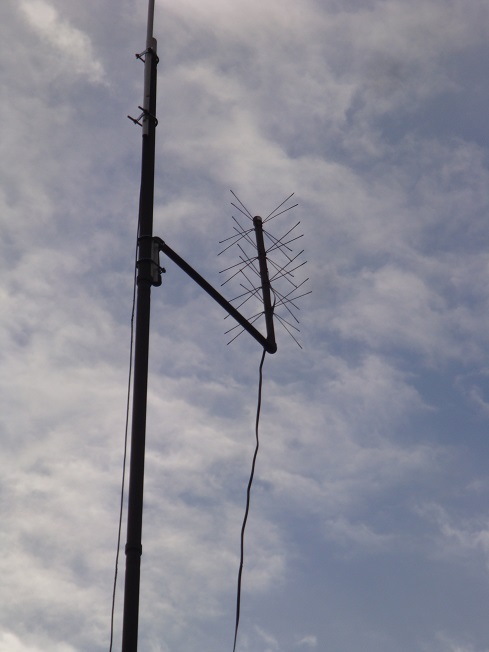Parts and Tools
The Score-Line & Screws
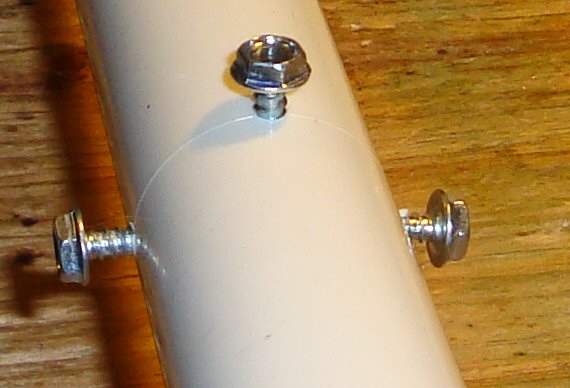
Wiring Diagram
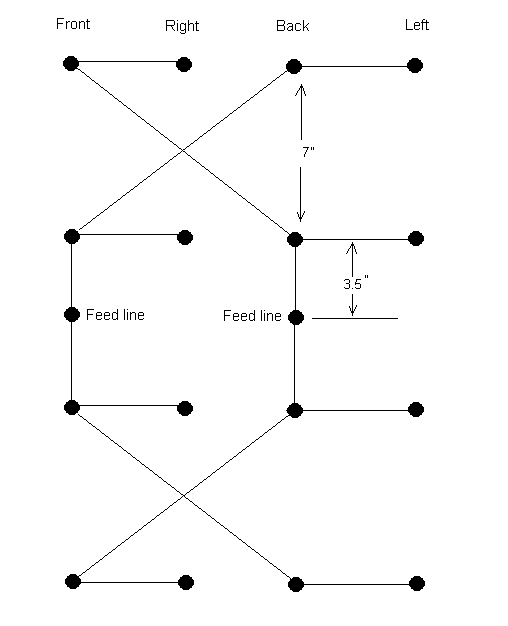
|
The PVC pipe used was:
OD: 1.3128", ID: 1.000"
Drinking Water CP-112-P
PVC 1120 SCH 40 PR 150 PSI @ 23 deg C, ASTM D1785
|
|
The dimensions of the antenna can be found in many articles on the web
as well as in many magazine articles. My experiments on the size of
the elements shows that size is pretty much unimportant. see my blog articles at Karras' Corner |
|
Bow Tie Element Length Evaluation related experiments are:
Transformer Tests Bow Tie Antenna Angle Tests |
|
My elements are made from coat hanger material starting at 16"
long and bent in half. The tips of each element are then 3"
apart, so the V is 8" on a side and the ends of the V are 3"
apart.
The length of the PVC pipe only needs to be long enough to allow for mounting the four sections plus length for how you wish to mount the antenna. Perhaps consider a starting length of about 28" so there can be about 2" at the top and about 5" at the bottom. I used more for my antennas because of the way I wanted to mount them on the poles which also had my amateur radio antennas on them. |
First Element and Wire
Four Elements Attached
Alignment of the finished Antenna Elements
This antenna has 360 degree coverage and it is horizontally polarized with gain because
of the four elements. This antenna is made up of four dipoles each of two quater wavelength
sections of about 7.5" each for a total length of about 15". In this photo you can see the
alignment of the elements from top to bottom.
The Finished Antenna sitting on the floor."
The antenna is being held up by its mounting pipes. The only difference is that I rotated the
bottom 3" section horizontally so it helps support the antenna while resting on the floor.
In the final installation the 3" section will be pointing down and it will be used to
hold the antenna to the antenna mast with two hose clamps. See photos below to see this.
Kitchen Table Test Sort Of East To Baltimore
Kitchen Table Test Sort Of South To DC
Aurora and the Missing Transformer, an Empty Case
You can see here that Aurora is holding the case of the 300 ohm to 75 ohm transformer but
the transformer has been removed and wires soldered into the case to make contact from the
300 ohm twin-lead wire to the cable type F connector. I have found that this method works
better than using these 4:1 transformers which were designed for the log periodic antennas
which were around 300 Ohm impedance going into new TVs with 75 Ohm inputs.
The Kitchen Table Test
I tested the antenna while it was sitting on the kitchen table with the elements pointing
somewhat south to Washington D.C. and somewhat east pointing twords Baltimore. The arrangement
allowed full reception of all Baltimore stations, 2, 11, 13, 24, 45, 54, and 67 as well as a
few Washington stations, 4, 20, and 32 but only 20 was received well, and then last the Ion
station, Ch 66, from Manassas VA.
OutsideTest.JPG
Close Up Outside Test
The Whip Antenna Test Setup
Mounted Antenna #1"
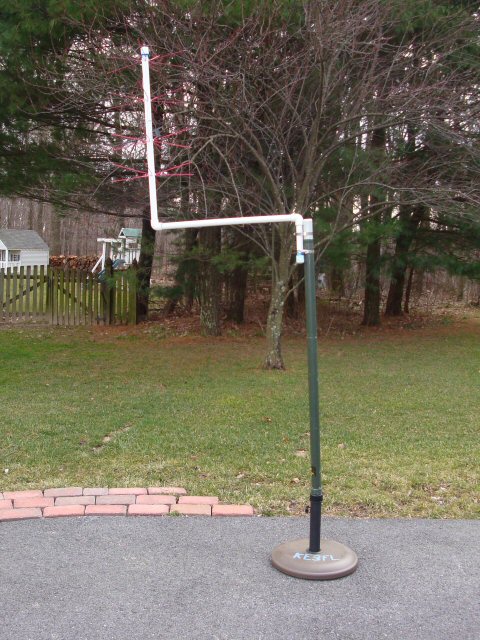
Mounted on an antenna mast sitting on the driveway.
Mounted Antenna #2"
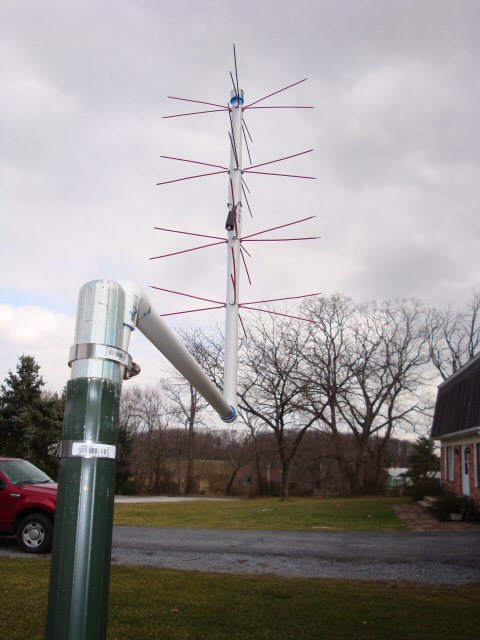
The last task of this project will be to protect all exposed wires and
then to paint the antenna.
Mounted Antenna #3"
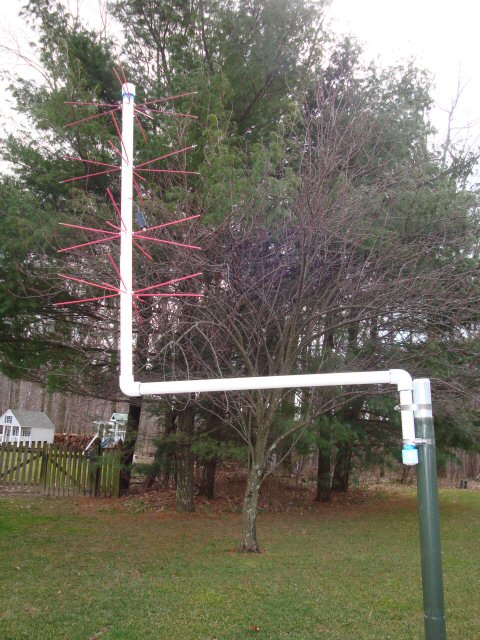
The "Porcupine" Antenna Mounted above our Kitchen
